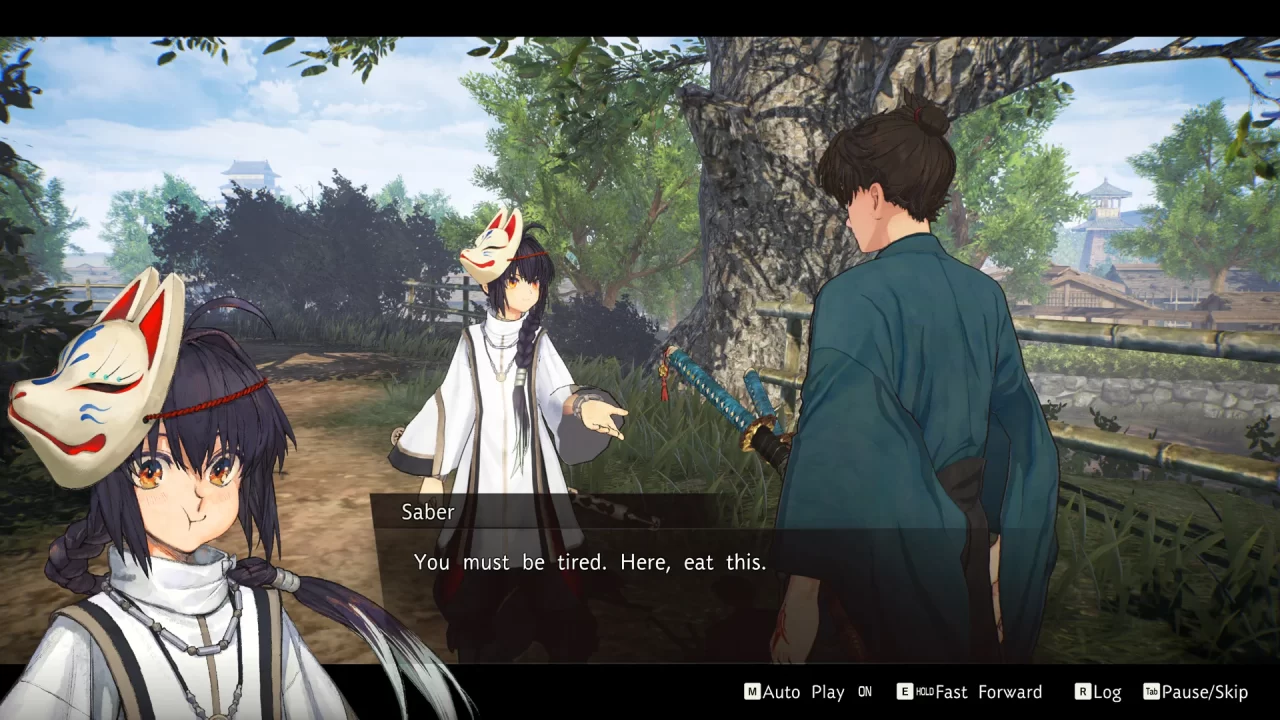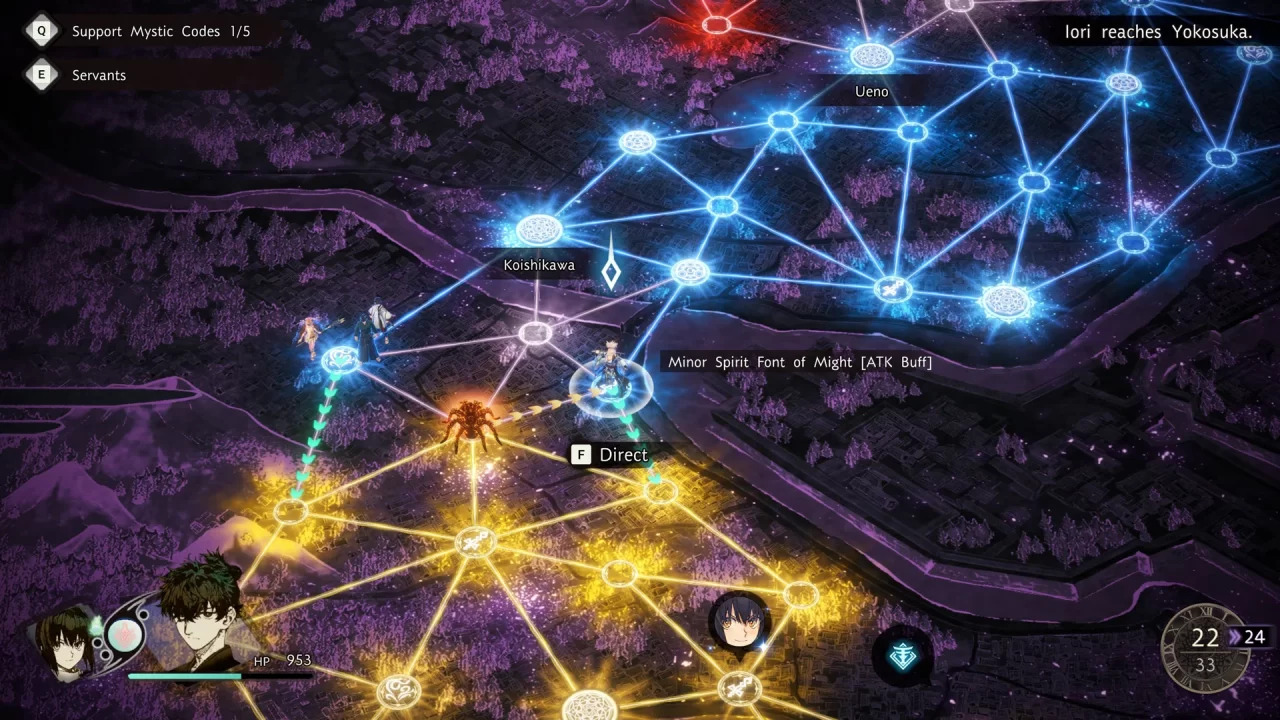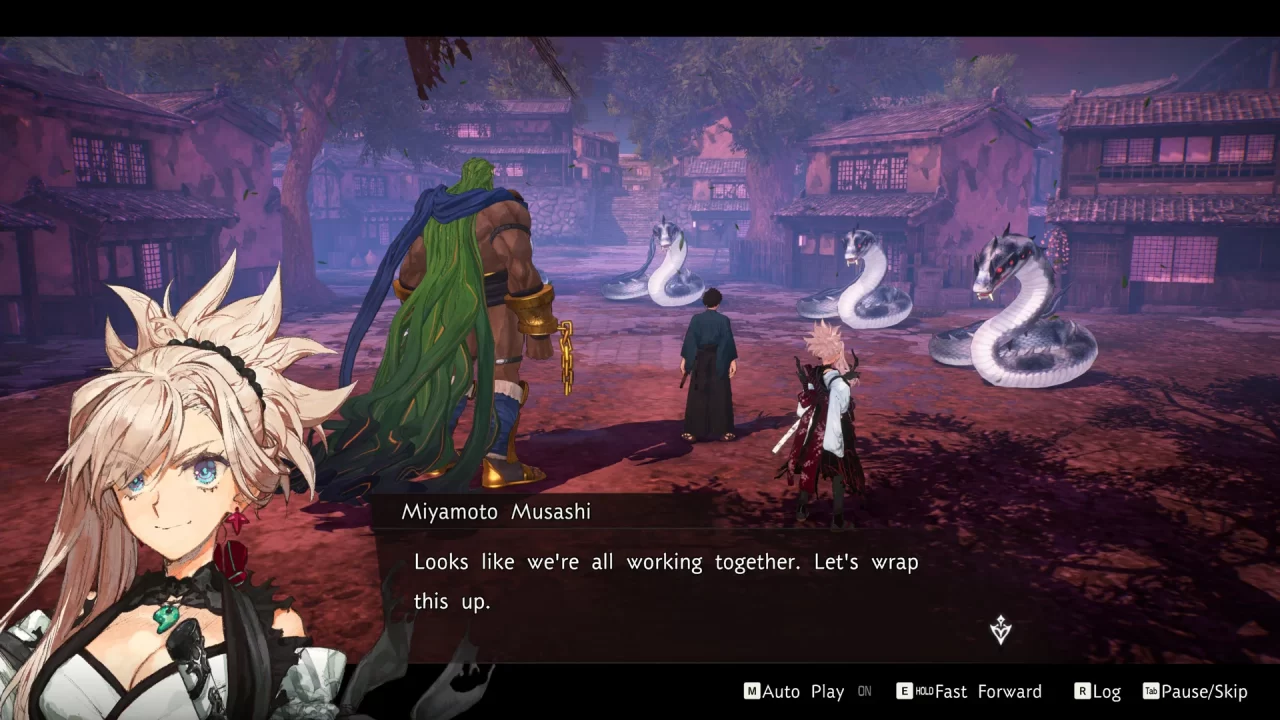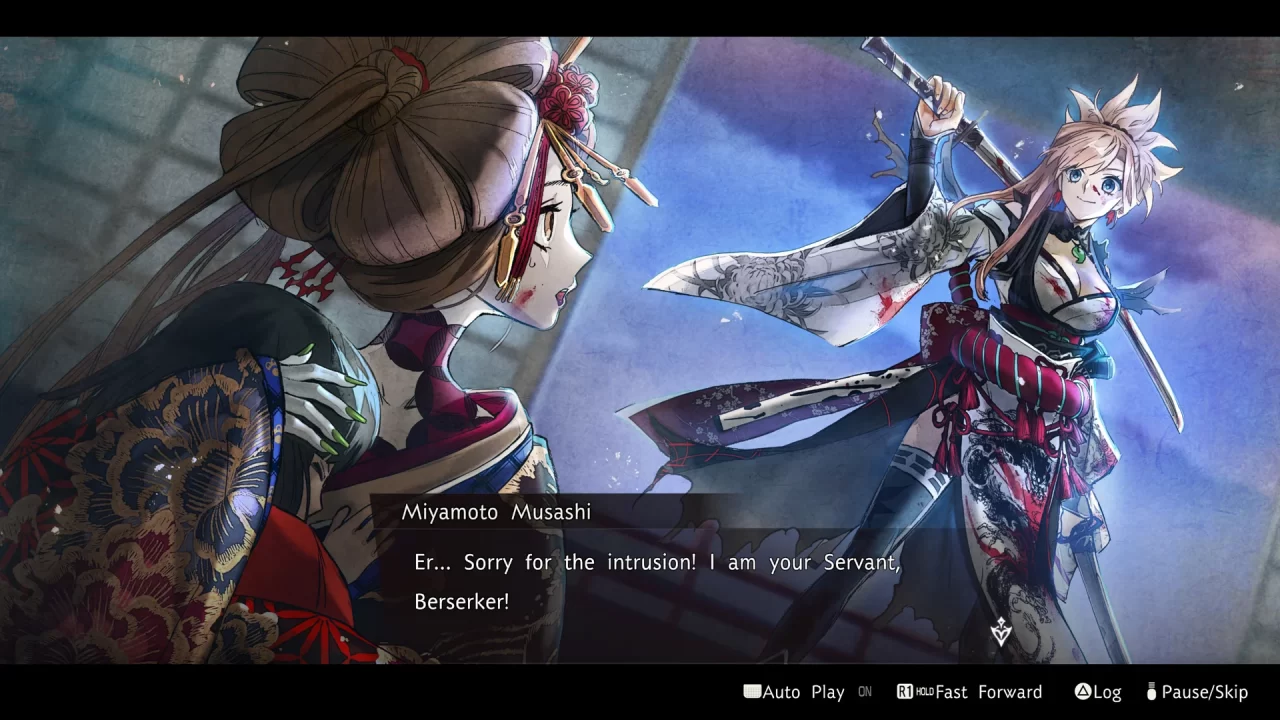The Fate franchise has been running strong for nearly 20 years now. Yet for the majority of its life, the series held strong with a cult following. Once the mobile gacha entry Fate/Grand Order was released to wild success, the franchise saw a massive uptick in popularity thanks to the grand cast of characters, the eye-catching artistic renditions of heroes from myth and legend, and the relatively impressive and mechanically interesting gameplay. Outside of Fate/Grand Order, however, the series has had mild success with when it comes to new games in the franchise. So, with a seemingly endless pile of money and a desire to tell a new story, Type-Moon teamed up with Koei Tecmo to create a new entry in the series that combined striking anime visuals with exciting and dynamic action gameplay while touching on a lesser-known period of Japanese history. With a fresh art style, a new setting, and inspired gameplay, Fate/Samurai Remnant carves its place in history as a solid action RPG with a great cast of characters and a fantastic story.
Fate/Samurai Remnant is a single-player action RPG developed by Omega Force, the team behind the long-running Warriors/Musou series. Rather than serve as another fanservice crossover game involving dozens—if not hundreds—of heroes, Fate/Samurai Remnant sets out to tell the story of the Holy Grail War set in Japan during the relatively peaceful Edo Period. The game tells the tale from the viewpoint of a Master—one who controls heroic spirits known as Servants, such as Saber, Rider, and Caster. Seven Masters and Servants are destined to fight to the death, all for the sake of having their wish granted by the Holy Grail. Yet this particular Holy Grail War comes with a bit of a twist: rather than assigning seven Masters and summoning seven Servants, something is awry. Alongside the usual classes are Rogue versions: Servants without a Master that may act as they please, yet find themselves bound to locations and wielding greatly diminished power. Throughout the game, protagonists Miyamoto Iori and his Servant Saber will align with these Rogue Servants as they fight in the Holy Grail War.
The story of Fate/Samurai Remnant follows Miyamoto Iori, the adopted son of the legendary Miyamoto Musashi. As Iori tries to live a quiet life and scrape by with a modest living, his peaceful days are shattered once he’s discovered to be a Master in the Waxing Moon Ritual—the name of Edo Japan’s Holy Grail War. With Iori’s life suddenly threatened, the mysterious Saber appears before him and serves as his defender. After that fateful night, Iori and Saber find themselves piecing together what they know about the Waxing Moon Ritual, why Iori was selected, and just what Saber’s true identity is. While the story focuses on Iori and Saber’s relationship as Master and Servant, a true friendship starts to blossom as the two eventually come to see one another as partners. Saber’s past and eventual identity reveal are depicted through gorgeous hand-drawn art pieces that tell the tragic story of one of history’s most legendary figures.
Despite its pedigree, Fate/Samurai Remnant is an action RPG through and through. Developer Omega Force has taken great strides recently—as seen with Samurai Warriors 5—to refine their skills and create exciting and mechanically interesting action RPGs. With this shift away from the “One Versus One Thousand” style of gameplay, Omega Force has been able to focus on creating mechanically rewarding and exciting battle systems that give characters more tools and abilities than in their previous games. While there are the usual light and heavy combo strings mixed with flashy special attacks, Fate/Samurai Remnant adds a vast amount of variety thanks to a few new systems.
The magic system allows offensive and defensive spells to be used in exchange for magic gems. The Link Strike system lets Iori issue solo commands to Saber or combine their attacks into devasting combo moves. Additionally, once Saber’s Link Gauge is full, players can swap over to her and get full control of her devastating and lightning-quick moveset that quickly clears the battlefield. Finally, being able to change stances can drastically switch up the gameplay as players move from stances focused on defense, offense, speed, magic, and range. Completing combos in stances grants players the Afterglow state, which allows players to carry over elements and features of their previous stance, such as super armor, energy waves, knockback, and more.
When not clashing blades with foes, players will face another new system: the Spirit Font. This mode serves as my favorite part of the game thanks to the strategic element it adds while being incredibly visually appealing. The overworld map turns dark purple with neon leylines crisscrossing the land. Areas are divided into major and minor Spirit Font nodes, and capturing these will give the player a massive boost to stats in this mode while converting captured nodes to permanent yet smaller stat boosts. Engaging with this mode is exciting and fun as new threats enter the battlefield, enemies charge at undefended nodes, and players dart all over the map with special abilities known as Mystic Codes. Capturing certain nodes may allow Rogue Servants to assist both in and out of battle, which gives players more chances to play as their favorite characters.
As an action RPG, Fate/Samurai Remnant puts its best foot forward with its boss battles. Every Servant battle is a unique experience. I was reminded of Final Fantasy XIV and NieR: Automata on numerous occasions because of the AoE markers and chaotic battlefield-filling special moves. The experience of going head-to-head with myths and legends is exciting, yet the way their abilities are incorporated into battle is also incredibly impressive. My favorite part, however, is when these characters become playable. At certain points in the story, players take control of a Servant they may have fought just moments prior. I found great joy in unleashing powerful abilities—which I had struggled against previously—on my foes, confirming that said attacks really did hit that hard.
Fate/Samurai Remnant‘s visual style is also quite striking. In one stroke, the game manages to capture the feeling of a Fate anime, manga, and game. Thanks to Rei Wataru’s 2D illustrations, the character portraits during dialogue lend a unique feel to every scene. Said illustrations manage to translate well to the 3D character models. Thanks to the masterful animation team, every character manages to feel unique and lively in motion. Where the game shines most, however, are the high-quality in-game cutscenes that feel like they’re straight out of a high-budget Fate anime. Every time a battle led into a flashy cutscene, it felt like watching the most climactic episodes of Fate/Zero. The direction, choreography, music, and use of color put these cinematics head and shoulders above Koei Tecmo’s contemporaries.
The soundtrack in Fate/Samurai Remnant is solid overall. Composers Keita Haga and Daisuke Shinoda combine their skills to create soundscapes that range from incredibly soothing and welcoming to oppressive and electrifying. Naturally, the boss themes are where the composer’s talents shine brightest. Yet their usage of traditional instruments for the peaceful town themes adds a wonderful contrast that makes the villages feel alive. The voice actors also put together a fantastic performance, each pouring their heart and soul into their roles as heartfelt goodbyes, noble sacrifices, and desperate war cries rip across the makeshift battlefields.
With flashy and fun combat, a great story and endearing characters, and intriguing mechanics and systems, there is a lot to love about Fate/Samurai Remnant on almost every front. However, there are a few small issues that do dampen the experience. The first issue I noticed was the pacing. At points in the story, things slow down as the party is pushed back or thwarted again and again. It can be a little exhausting going all over the map and fighting battle after battle, only to have little to show for it aside from a possible enemy location. While this does add more gameplay opportunities and allows the story to breathe, it can get a little tiresome to fight through walls of enemies when all the player wants is the next story beat.
The other issue I encountered involved battles with Servants and larger enemies. Each large foe has a shield, or a Shell as the game calls them. These deflect all normal attacks and can only be damaged with Magic Gems, by magic-imbued stances such as Wind and Fire, or by Saber or other Servants directly. Though attacks on a Shell do allow some damage to bleed over into the enemy’s health bar, some of the Shells feel a bit over-tuned and cause some battles to feel longer than they should be. Admittedly, I didn’t have an issue with the Servant battles feeling drawn out this way, but the large Oni and Fox Spirits and other large monsters could use an adjustment to their shields given how many of these creatures are fought back to back in the same instances.
Aside from those minor issues, I thoroughly enjoyed my time with Fate/Samurai Remnant. It’s a new and exciting action RPG that will challenge what players know about its developer Omega Force. It serves as another step towards a character-action RPG and feels like an evolution of what Samurai Warriors 5 was striving towards. The writing is superb and I found myself emotionally invested in Iori and Saber’s tale. Yet I also was sympathetic to the other Masters and Servants once I learned of their histories, desires, and fates. As someone with an interest in both Japanese and Chinese history, it was exciting to get a glimpse at some of the Eastern heroes of legend.
Fate/Samurai Remnant is an all-around great game, and I can only hope we see more fantastic collaborations like this from Type-Moon and Omega Force. My imagination is already running wild as I consider what this duo might achieve with a Fate game focused on heroes such as Jeanne d’Arc, and I can’t wait to see what’s next. Fans of Fate, action RPGs, samurai games, or Japanese history in general should give Fate/Samurai Remnant a look. It’s well worth the time and serves as a rewarding experience through and through.







